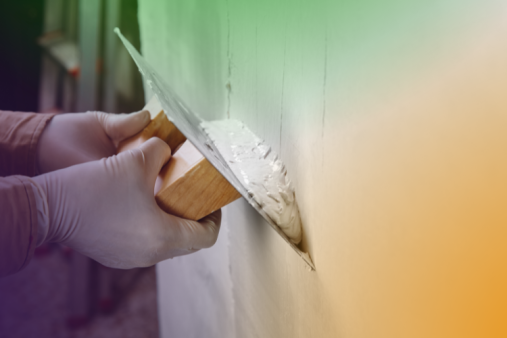Applying a mist coat is a common technique used in the UK to prepare newly plastered walls or ceilings for painting. It involves applying a diluted coat of emulsion paint to seal the plaster and provide a smooth surface for further painting. Here's a step-by-step guide on how to apply a mist coat:
-
Prepare the area: Ensure the newly plastered surface is clean, dry, and free from dust or debris. Protect the surrounding areas by covering floors and furniture with appropriate drop cloths or plastic sheets.
-
Gather materials: You will need emulsion paint suitable for mist coating (usually a matt or vinyl emulsion), clean water, a paint tray, a paint roller, and a paintbrush.
-
Dilute the paint: Mix the emulsion paint with clean water in a ratio recommended by the paint manufacturer. As a general guideline, a common ratio is 1 part water to 4 parts paint. Stir the mixture thoroughly to achieve a consistent consistency.
-
Start with the edges: Using a paintbrush, carefully cut in around the edges of the wall or ceiling, ensuring you cover any corners or areas that are difficult to reach with a roller.
-
Apply the mist coat: Pour the diluted paint into a paint tray. Dip a paint roller into the tray and roll it back and forth to ensure even distribution of the paint. Remove any excess paint from the roller by rolling it on the tray's ridges.
- Start at one corner of the wall or ceiling and work in small sections.
- Apply the mist coat using light, even strokes, moving the roller vertically and horizontally to achieve uniform coverage.
- Avoid excessive pressure that may result in streaks or drips. The aim is to create a thin, translucent coat.
- Work quickly to maintain a wet edge, blending each section into the next as you progress.
-
Allow drying time: Once the mist coat is applied, allow it to dry completely. Follow the drying time specified by the paint manufacturer, typically around 24 hours, but it can vary based on the specific paint used and environmental conditions.
-
Inspect and prepare for further painting: After the mist coat has dried, inspect the surface for any imperfections. If necessary, lightly sand any rough areas or drips before proceeding with additional coats of paint.
Remember, a mist coat is primarily a sealing coat and may not provide full coverage. It is typically followed by additional coats of paint to achieve the desired finish. Consult the paint manufacturer's instructions for the recommended number of topcoats and drying times between coats.
It's always recommended to follow proper safety precautions when working with paint, such as ensuring adequate ventilation, wearing protective clothing, and carefully reading and following the instructions provided by the paint manufacturer.








